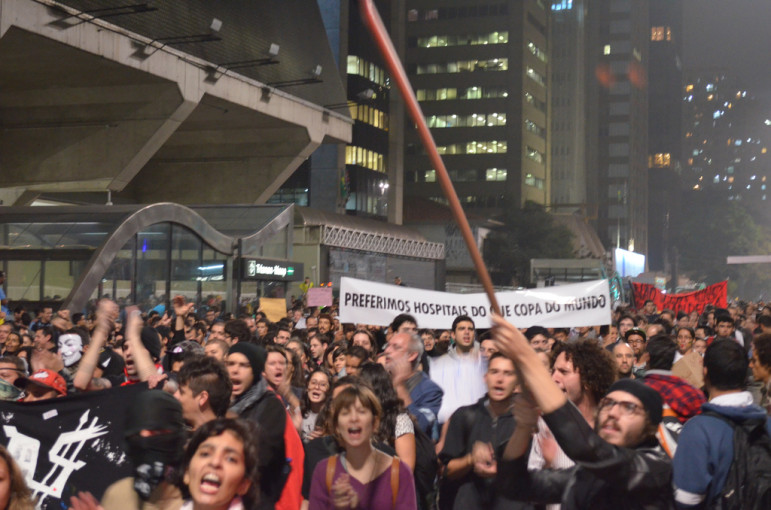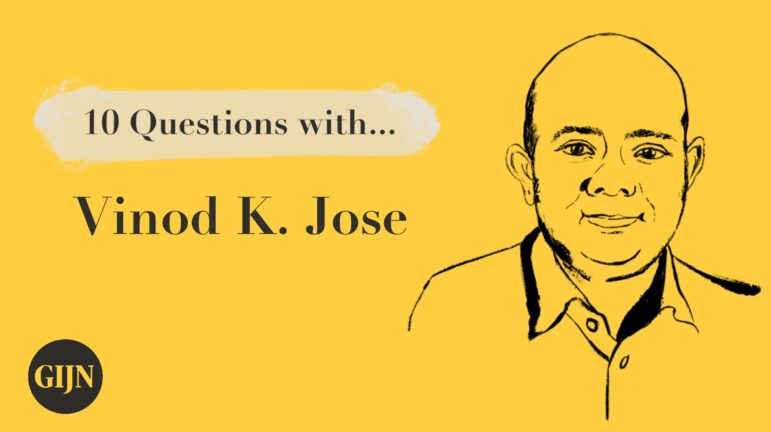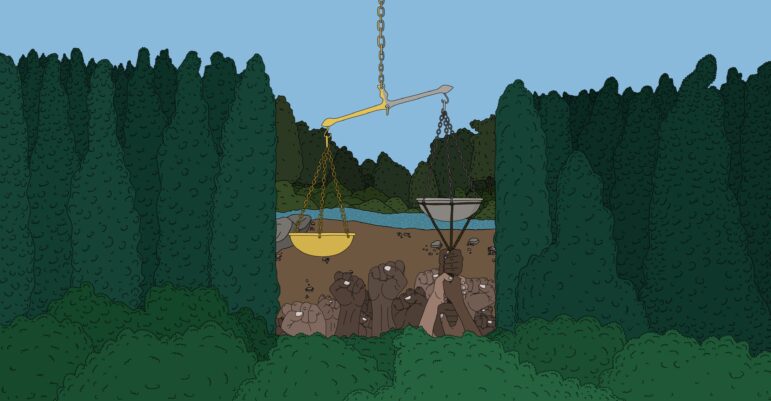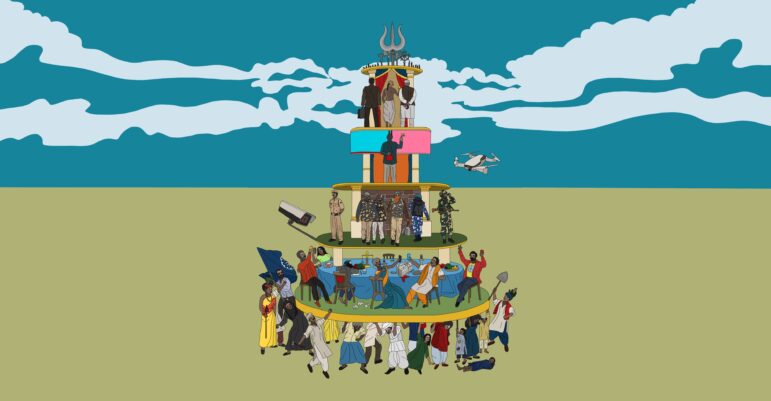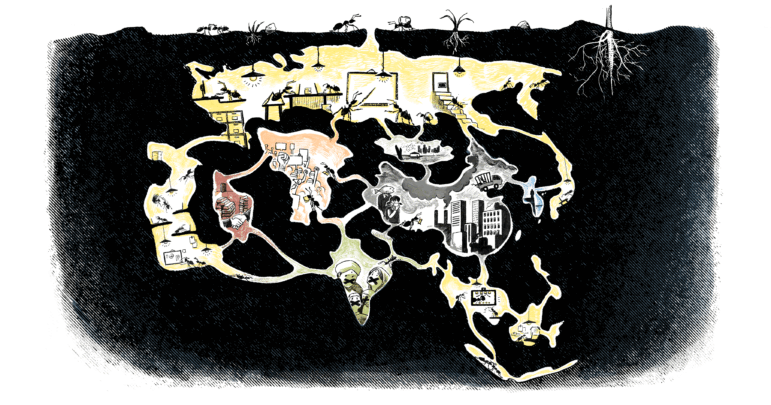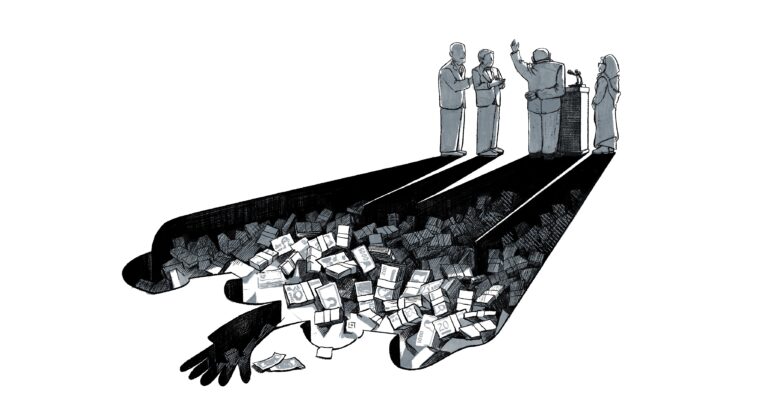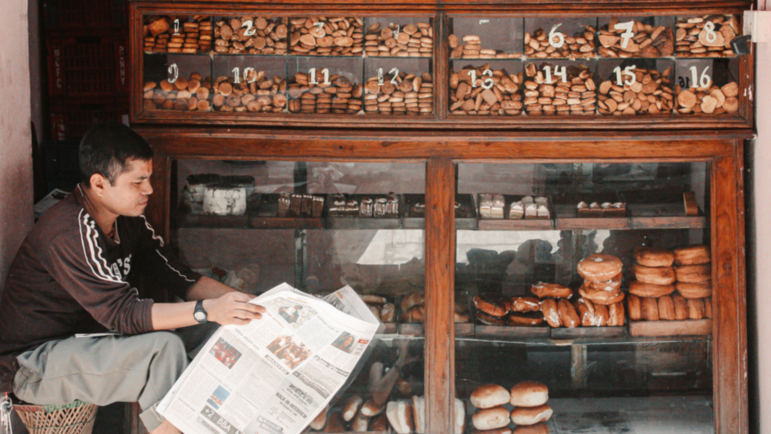

Illustration: Nyuk for GIJN
‘Impact is Often Subliminal’: A Nepali Journalism Veteran on the Highs — and Lows — of His Reporting Career
Read this article in
In most of the conferences I attend around the world, a question that often comes up is: “Do you know Kunda?” My answer is always the same: “Of course.”
Kunda Dixit is one of Nepal’s most influential journalistic voices — a reporter, editor, author, and mentor who has not only chronicled events himself but also nurtured and guided journalists in Nepal and beyond.
A graduate of Columbia University’s Journalism School, he began his career at BBC Radio at the United Nations in New York, and went on to serve as Asia-Pacific Regional Editor of Inter Press Service, a news agency.
Returning home, Dixit established Panos South Asia and authored several books, including “A People War” — which chronicled Nepal’s conflict — and “Dateline Earth: Journalism As If the Planet Mattered.” Today, he is the publisher of the Nepali Times and also serves as chair of the Centre for Investigative Journalism – Nepal (CIJ-N).
In 2016, GIJN organized the second Uncovering Asia Conference in the Nepalese capital Kathmandu, and one of the key people behind it was Dixit. But just before the conference took place — in a complex turn of events — he went into self-imposed exile because of the fear of being arrested. In this interview, he describes that chain of events as one of the worst times of his journalism career.
Even today, investigative reporting in Nepal can pose challenges, from the problems tied to state and corporate control of parts of the press, “as well as threats of physical harm when a reporter gets close to a story, especially at the local level,” Dixit shares.
According to Reporters Without Border (RSF), press freedom in the country has also taken a downward turn: dropping from 74th in the world in 2024 to 90th position this year.
Journalists were also caught up in recent anti-corruption and anti-government protests that swept through Nepal, eventually leading to the fall of the government. According to RSF, the headquarters of over a dozen media outlets and journalists’ organizations were attacked during the protests, while elsewhere, reporters were injured by rubber bullets fired by the police.
With a new, interim government now in place, Célia Mercier, head of the RSF’s South Asia Desk warned that “in times of crisis and instability, it is more essential than ever to protect the right to inform and to be informed.”
When news started to circulate that the protests had reached Parliament, Dixit was actually doing scholarship interviews across town. He found his way home just before the curfew, and got in touch with one of his editors to coordinate coverage.
“We were trying to make sense of it all and figuring out what would happen next,” he says.
GIJN: Of all the investigations you’ve worked on, which has been your favorite and why?
Kunda Dixit: At Nepali Times, the most exciting investigation we published was when two of our reporters went undercover in a sting operation to expose an international adoption racket in Kathmandu. It carried some risk, but… it was good to see that the story had an impact.
GIJN: What are the biggest challenges in terms of investigative reporting in your country or region?
KD: The biggest challenge and threat is from a vengeful state that hits back at journalists with SLAPPs and made-up charges and jails them for defamation or charges of financial irregularities. Reporters in the districts are more at risk since they are closer to the story. Local perpetrators of illegal natural resources extraction have been known to kill journalists.
GIJN: What’s been the greatest challenge that you’ve faced in your time as an investigative journalist?
KD: The worst time must have been in 2016 when our publication was targeted by the head of Nepal’s anti-corruption bureau. He retaliated [to our reporting on his appointment and opposition to it] by framing us on made-up charges. Some of us were imprisoned, had to go into hiding, and I myself had to leave the country for six months while we were preparing for the GIJN conference in Kathmandu.
GIJN: What is your best tip for interviewing?
KD: Ice breakers. Start with softballs. Reassure the whistleblower that they will be safe and will not face repercussions. Convince them that it is for the greater public good, and you have no other vested interest in the story.
GIJN: What is a favorite reporting tool, database, or app that you use in your investigations?
KD: No apps. No devices. Just a lot of hard, relentless legwork, chasing the paper — or digital — trail.
GIJN: What’s the best advice you’ve gotten thus far in your career and what words of advice would you give an aspiring investigative journalist?
KD: Patience. Investigative stories do not happen overnight; be flexible because the story and protagonists may change as the investigation follows its course. Do not harm. Be careful not to hurt the reputation of innocent people. Be aware of the motives that [anonymous sources] like Deep Throat may have to leak information to you.
GIJN: Who is a journalist you admire, and why?
KD: When I was in Manila in the 1990s, it was the work of the Philippine Centre for Investigative Journalism (PCIJ) that impressed me the most. The women-led team was the best example of journalism playing the adversarial role to strengthen hard-earned democracy. When I returned to Kathmandu in 1997, we patterned the CIJ-N after PCIJ, and both our organizations became the first Asian members of GIJN.
GIJN: What is the greatest mistake you’ve made and what lessons did you learn?
KD: We make mistakes. We once got a video about a Nepali worker being beaten up and abused by his boss in Malaysia. We published the story after due diligence, but obviously it was not enough. We double-checked, but the video turned out to be a fist fight between two fellow security guards. Lesson: triple-check everything — especially in the age of deepfakes.
GIJN: How do you avoid burnout in your line of work?
KD: It is easy to get disheartened when an exposé that took a lot of time and effort seemingly does not have impact. But I have learnt that impact is often subliminal — public awareness cannot be quantified accurately, but in small ways can change the source of a country’s history. Believe in the power of one.
GIJN: What about investigative journalism do you find frustrating, or do you hope will change in the future?
KD: The most frustrating thing now is that media companies are in crisis and do not have the resources to assign reporters to investigate wrongdoing. The attention span of readers and users has also dropped drastically. The challenge is to find ways to hold their attention with innovative packaging for reader-based revenue. And we have to somehow ensure that the business model of media does not collapse, or find alternative ways to fund investigative reporting through fellowships.
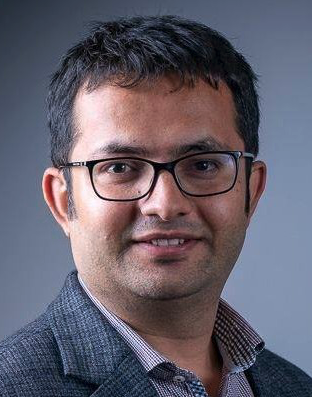 Rajneesh Bhandari is the founder and chief editor at the Nepal Investigative Multimedia Journalism Network (NIMJN). He was a Fulbright Hubert H. Humphrey Fellow in investigative reporting at the Walter Cronkite School of Journalism at Arizona State University, and oversees training, the innovation lab and collaborative investigative multimedia reporting projects at NIMJN. His work has been published in the New York Times, National Geographic, Aljazeera English, among other places.
Rajneesh Bhandari is the founder and chief editor at the Nepal Investigative Multimedia Journalism Network (NIMJN). He was a Fulbright Hubert H. Humphrey Fellow in investigative reporting at the Walter Cronkite School of Journalism at Arizona State University, and oversees training, the innovation lab and collaborative investigative multimedia reporting projects at NIMJN. His work has been published in the New York Times, National Geographic, Aljazeera English, among other places.
Nyuk was born in 2000 in South Korea. He is currently studying at the Department of Applied Art Education at Hanyang University in Seoul, South Korea, where he also works as an illustrator. Since an exhibition at Hidden Place in 2021, he has participated in various illustration exhibitions. He is mainly interested in hand drawing, which represents the value of his art world.

